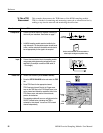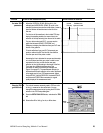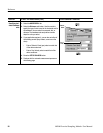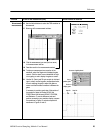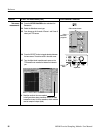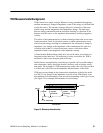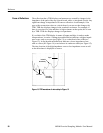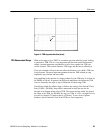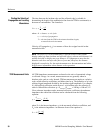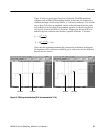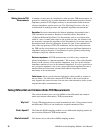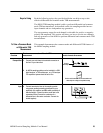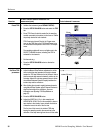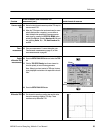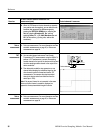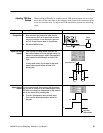
Reference
30
80E00 Electrical Sampling Modules User Manual
The time between the incident edge and the reflected edge is valuable in
determining the length of the transmission line from the TDR to a mismatch, or
between two mismatches. The formula is:
D = v
◽
×
T
2
=
v
◽
T
2
where:
v
◽
= velocity of propagation
T =
the time from t he TDR to the mismatch and back again,
as measured on the instrument
D = di stance to the fault
Velocity of Propagation (v
ρ
) is a measure of how fast a signal travels in that
transmission line.
NOTE. The factor of 2 in the denominator is present because TDR systems
display round-trip time (incident and reflected edges), whereas with distance it is
usually desirable to display one-way distance. It is important to note that the
distance scale does not inject this factor of two and, therefore, the distance
displayed is round-trip. See the m ain instrument user documentation and online
help for more information about distance scale operation.
All TDR impedance measurements are based on the ratio of transmitted voltage
to reflected voltage. As a result, measurements are not generally taken in
absolute units, such as volts. Instead, TDR measurements are made on a relative
scale, called reflection coefficient, and abbreviated as ρ. The definition of ρ is the
reflected signal amplitude divided by the incident signal amplitude. For example,
if a 100-millivolt reflection results from a 1-volt incident step, the reflection is
called a 100 millirho reflection: ρ =E
reflected
/E
incident
= 100 mρ = 100 mV/1 V.
Given a known impedance and a measured reflection coefficient, the unknown
impedance that caused the reflection can be calculated from the following
equation:
◽ =
E
reflected
E
incident
=
Z
L
–Z
o
Z
L
+ Z
o
where Z
o
is the known impedance, ρ is the measured reflection coefficient, and
Z
L
is the unknown impedance. An alternate form of the equation is:
Z
L
= Z
O
Ꮛ
1 + ◽
1 − ◽
Ꮠ
Finding the Velocity of
Propagation and Locating
Mismatches
TDR Measurement Units



